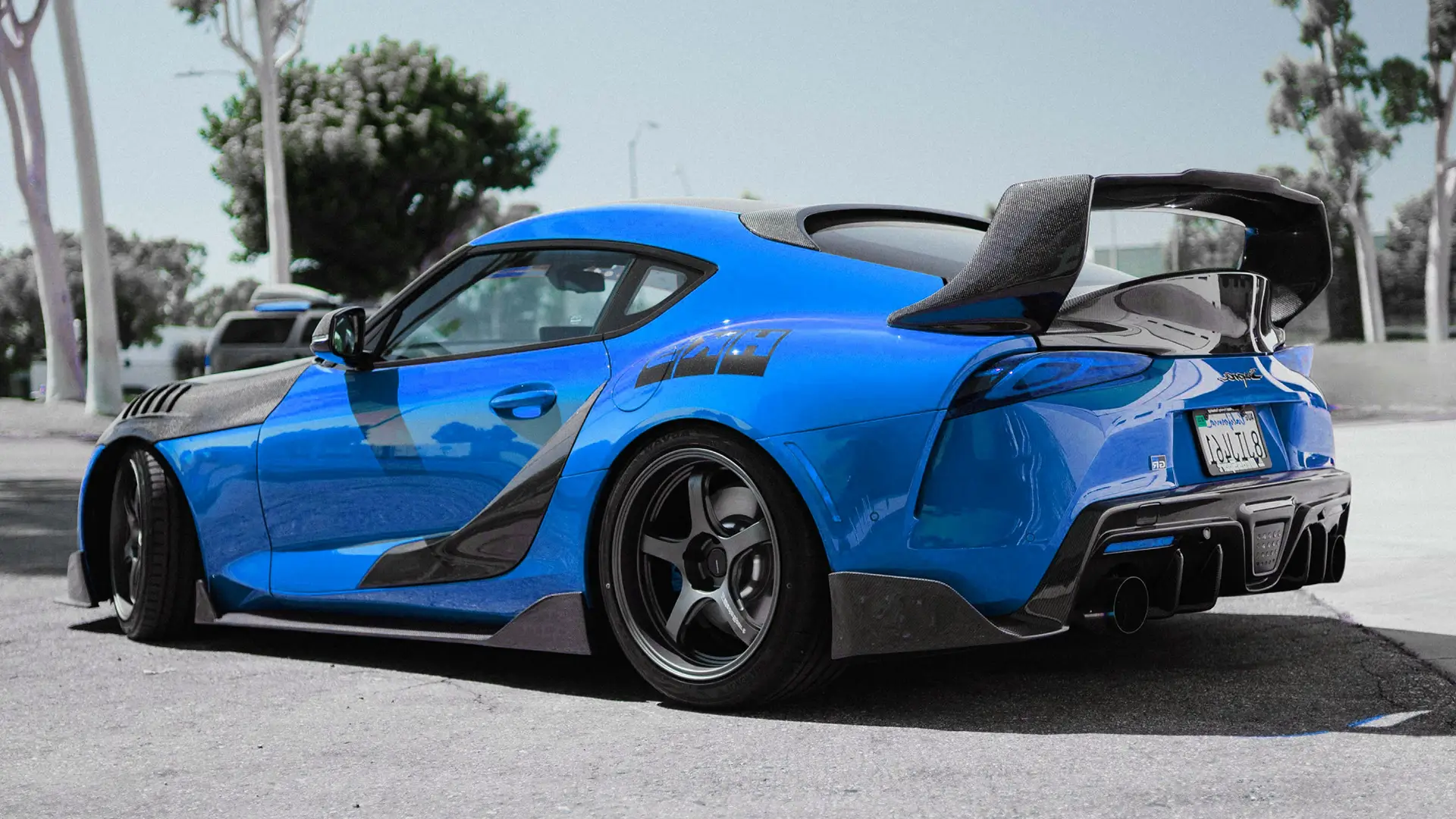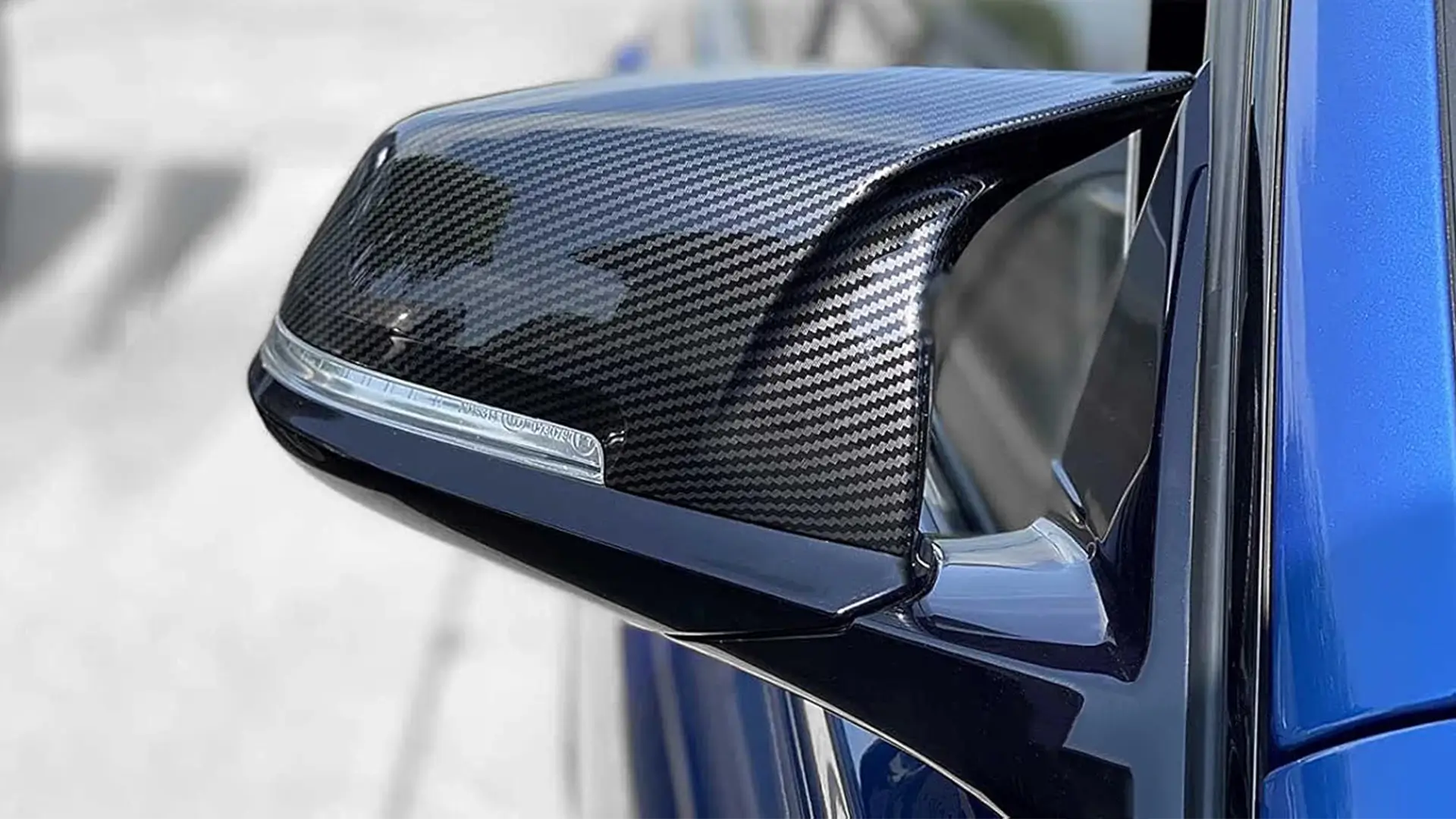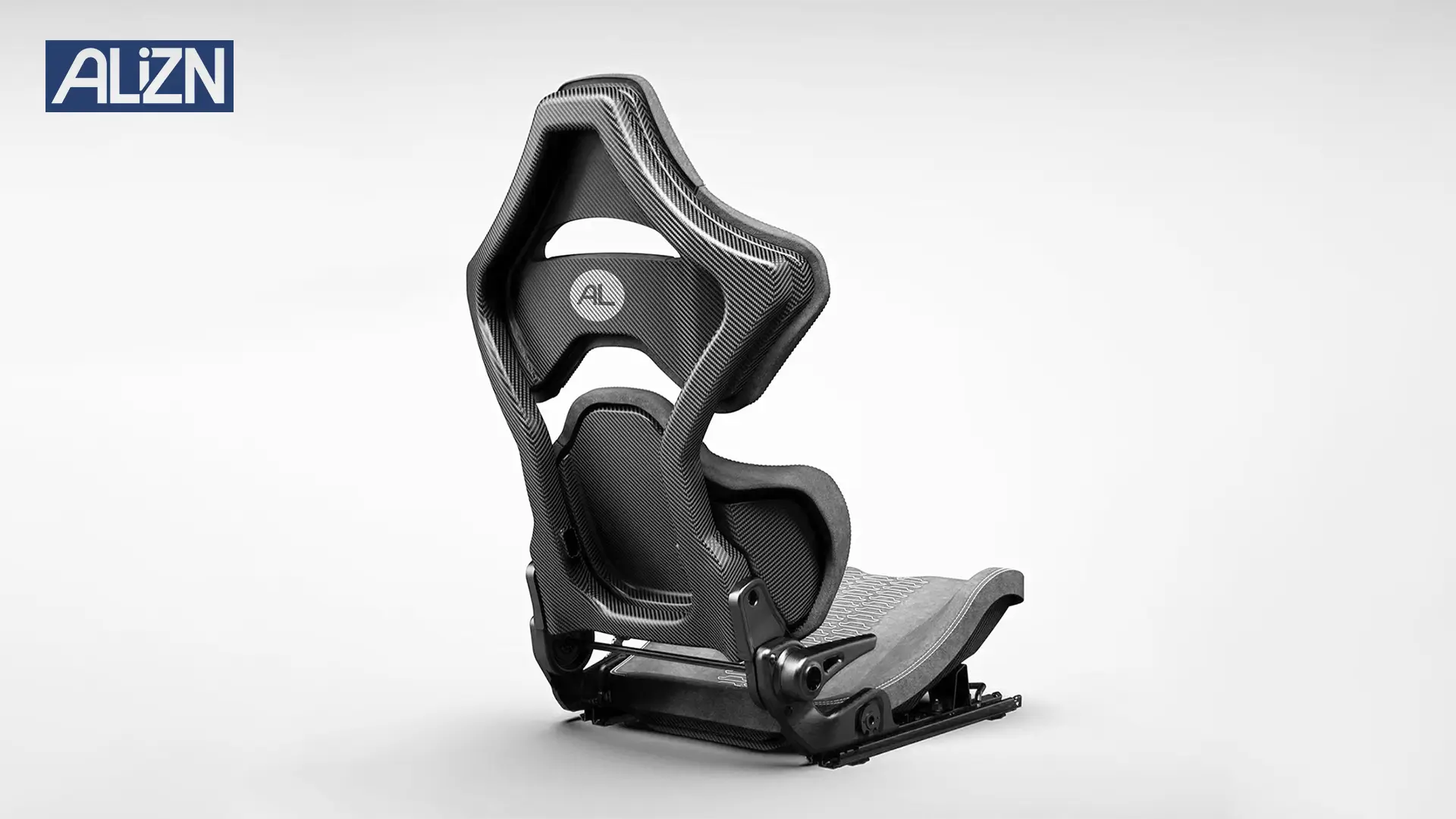The Importance of Carbon Fiber Wings in Automotive Design
A carbon fiber wing is a critical aerodynamic component designed to improve vehicle stability, reduce drag, and enhance downforce at high speeds. By reducing weight compared to traditional materials like aluminum or steel, carbon fiber wings contribute to better fuel efficiency and handling, making them a staple in performance motorsports and premium automotive markets. At Alizn, we recognize that OEM clients have diverse needs when ordering carbon fiber wings in bulk, from delivering top-tier quality for luxury brands to balancing cost and performance for broader market segments. Below, we outline three manufacturing processes—autoclave, resin transfer molding (RTM), and hand layup with vacuum bagging—tailored for bulk production of carbon fiber rear wings, each suited to specific market demands.
High-End Manufacturing: Autoclave Process for Premium Carbon Fiber Rear Wing
Overview of the Autoclave Process
The autoclave process is the benchmark for manufacturing premium carbon fiber wings, widely adopted by luxury OEMs and high-performance vehicle manufacturers. This method involves layering pre-impregnated (prepreg) carbon fiber sheets into a precision mold designed to match the wing’s aerodynamic profile. The mold is sealed in a vacuum bag and cured in an autoclave, a high-pressure, high-temperature chamber that ensures optimal material consolidation. This controlled environment produces carbon fiber rear wings with exceptional strength, minimal imperfections, and a flawless finish, ideal for high-end applications.
Benefits for Carbon Fiber Wings
At Alizn, the autoclave process allows us to craft carbon fiber wings with superior structural integrity and a glossy, show-quality surface finish. The high-pressure curing eliminates voids and air bubbles, resulting in a lightweight yet robust wing capable of withstanding aerodynamic forces at high speeds. This method also supports complex designs, enabling precise shaping for optimal downforce and aesthetic appeal, making it perfect for carbon fiber rear wings used in supercars, race cars, or premium OEM models.
Ideal Applications for Bulk Orders
The autoclave process is ideal for OEM clients targeting the luxury or motorsport markets, where quality and performance are non-negotiable. For bulk orders, this method ensures consistency across large production runs, delivering carbon fiber wings that meet stringent quality standards. While more resource-intensive, it is the preferred choice for brands prioritizing prestige and aerodynamic precision over cost considerations.
Key Features of Autoclave-Produced Carbon Fiber Wings
| Feature | Description |
|---|---|
| Material Quality | High-grade prepreg carbon fiber for consistent strength and durability. |
| Surface Finish | Mirror-like, glossy finish with no visible defects, ideal for premium vehicles. |
| Weight | Ultra-lightweight, enhancing aerodynamic efficiency and vehicle performance. |
| Durability | Exceptional resistance to aerodynamic stress, vibration, and environmental factors. |
| Cost | Higher due to advanced equipment, premium materials, and extended production time. |
Suitability for Carbon Fiber Rear Wings
For carbon fiber rear wings, the autoclave process excels in producing components with precise aerodynamic profiles and robust mounting points. This ensures the wings deliver maximum downforce while maintaining structural integrity under high-speed conditions, making it a top choice for OEMs producing high-performance or luxury vehicles in bulk.
Mid-Range Manufacturing: Resin Transfer Molding (RTM) for Scalable Carbon Fiber Wing
Understanding RTM
Resin transfer molding (RTM) is a highly efficient method for producing mid-range carbon fiber wings, particularly suited for bulk orders requiring a balance of quality and cost. In this process, dry carbon fiber fabric is placed into a two-part mold designed for the wing’s shape. Liquid resin is injected under pressure to saturate the fibers, and the mold is heated to cure the resin, forming a solid, lightweight component. RTM is ideal for medium to high-volume production, offering consistent quality at a lower cost than autoclave manufacturing.
Advantages for Carbon Fiber Rear Wings
RTM enables Alizn to produce carbon fiber wings with reliable structural performance and a smooth finish, suitable for mid-tier OEM applications. The closed-mold system ensures even resin distribution, minimizing waste and enhancing the wing’s strength-to-weight ratio. This method’s repeatability makes it perfect for bulk orders, delivering carbon fiber rear wings that meet performance requirements while keeping production costs manageable.
Who Should Choose RTM?
RTM is ideal for OEM clients targeting mid-range performance vehicles or aftermarket brands seeking high-quality carbon fiber wings at a competitive price. For bulk orders, RTM’s scalability ensures efficient production without compromising on quality, making it suitable for sports cars, performance sedans, or aftermarket aerodynamic kits where cost-efficiency is a priority.
Key Features of RTM-Produced Carbon Fiber Wings
| Feature | Description |
|---|---|
| Material Efficiency | Dry carbon fiber and injected resin reduce waste and optimize costs. |
| Surface Finish | Smooth and consistent, requiring minimal post-processing for a polished look. |
| Weight | Lightweight, slightly heavier than autoclave wings but effective for performance. |
| Durability | Strong and reliable, suitable for high-speed driving and moderate aerodynamic stress. |
| Cost | Moderate, balancing quality and affordability for bulk production. |
RTM for Carbon Fiber Rear Wings
For carbon fiber rear wings, RTM offers a cost-effective solution for producing components with complex aerodynamic shapes and reliable mounting systems. The process supports medium to high-volume production, making it ideal for OEMs scaling up production for mid-range performance vehicles or aftermarket applications, ensuring consistent quality across large orders.
Entry-Level Manufacturing: Hand Layup and Vacuum Bagging for Cost-Effective Carbon Fiber Wing
How Hand Layup and Vacuum Bagging Works
For OEM clients seeking cost-effective solutions for bulk orders, the hand layup and vacuum bagging process is a practical method for producing carbon fiber wings. Technicians manually layer carbon fiber fabric into a mold, applying liquid resin between layers. The mold is then sealed in a vacuum bag, which removes air and compacts the material during curing, ensuring a solid bond. This process is less automated but highly flexible, making it suitable for low-volume or custom bulk orders.
Benefits for Carbon Fiber Wings
Hand layup with vacuum bagging allows Alizn to produce carbon fiber wings at a reduced cost, making them accessible for entry-level OEM applications or aftermarket brands. While the surface finish may require additional polishing compared to autoclave or RTM methods, the resulting wings are lightweight and durable, offering a budget-friendly option for bulk production. This method is particularly suited for carbon fiber rear wings used in aftermarket kits or entry-level performance vehicles.
Ideal Applications for Bulk Orders
This method is best suited for OEM clients targeting the entry-level market or aftermarket brands producing carbon fiber wings for budget-conscious customers. For bulk orders, hand layup provides flexibility for custom designs or smaller production runs, making it ideal for prototyping, regional markets, or niche applications where cost is a primary concern.
Key Features of Hand Layup and Vacuum Bagging Carbon Fiber Wings
| Feature | Description |
|---|---|
| Material Use | Standard carbon fiber fabric with manual resin application, reducing costs. |
| Surface Finish | May require additional sanding or polishing for a refined appearance. |
| Weight | Lightweight, though slightly heavier than RTM or autoclave wings. |
| Durability | Adequate for general use, with good resistance to moderate aerodynamic stress. |
| Cost | Low, ideal for budget-conscious bulk orders and small-scale projects. |
Suitability for Carbon Fiber Rear Wings
For carbon fiber rear wings, hand layup and vacuum bagging offer a cost-effective way to produce functional aerodynamic components for entry-level applications. This method supports custom designs and smaller batch sizes within bulk orders, making it suitable for OEMs or aftermarket brands targeting enthusiasts seeking affordable upgrades.
Comparing Manufacturing Methods for Carbon Fiber Wings in Bulk Orders
Choosing the right manufacturing method for carbon fiber wings in bulk orders depends on your brand’s priorities, target market, and budget. The table below summarizes the key differences to guide your decision:
| Manufacturing Method | Quality Level | Cost | Production Volume | Best For |
|---|---|---|---|---|
| Autoclave | Premium | High | Low to Medium | Luxury vehicles, high-performance rear wings |
| Resin Transfer Molding (RTM) | Mid-Range | Moderate | Medium to High | Mid-tier sports cars, aftermarket kits |
| Hand Layup & Vacuum Bagging | Entry-Level | Low | Low to Medium | Budget aftermarket, custom bulk orders |
Factors to Consider for Bulk Carbon Fiber Wing Production
Selecting the appropriate manufacturing process for your carbon fiber rear wings requires careful evaluation of several factors:
- Brand Positioning: Luxury or high-performance OEMs should opt for the autoclave process to ensure premium quality and exclusivity for their carbon fiber wings. Mid-range brands or aftermarket suppliers can leverage RTM for cost-effective scalability, while hand layup suits budget-conscious or custom-focused clients.
- Performance Requirements: High-performance vehicles, especially those in motorsports, benefit from the lightweight and durable properties of autoclave-produced wings. RTM wings offer sufficient performance for sports cars, while hand layup wings are suitable for aesthetic upgrades or moderate performance needs.
- Budget Constraints: Autoclave production is the most expensive, followed by RTM, with hand layup being the most affordable. Align your choice with your financial goals to optimize cost-efficiency for bulk orders.
- Production Volume: RTM is ideal for high-volume bulk orders, ensuring scalability and consistency. Autoclave suits lower to medium volumes with premium quality, while hand layup is flexible for smaller batches or custom designs within bulk production.
- Customization Needs: Hand layup offers the most flexibility for bespoke wing designs, while RTM and autoclave provide consistency for standardized or semi-custom wings in bulk.
Why Choose Alizn for OEM Carbon Fiber Wing Production?
At Alizn, we pride ourselves on our expertise in delivering carbon fiber wings that meet the diverse needs of our OEM clients. Our advanced facilities and skilled team ensure that each wing, whether produced via autoclave, RTM, or hand layup, adheres to rigorous quality standards. We collaborate closely with our clients to understand their brand vision, performance requirements, and production goals, providing tailored solutions that enhance their vehicles and strengthen their market position. For bulk orders, our scalable processes and commitment to quality make us a trusted partner for OEM carbon fiber production.
Conclusion
Carbon fiber wings are a transformative addition to any vehicle, offering aerodynamic efficiency, lightweight performance, and a premium aesthetic. By selecting the right manufacturing method—autoclave for luxury and high-performance applications, RTM for scalable mid-range production, or hand layup for cost-effective customization—you can align your carbon fiber rear wings with your brand’s objectives and market demands. At Alizn, we are dedicated to guiding our OEM clients through this process, leveraging our expertise to deliver carbon fiber wings that elevate their vehicles and meet bulk order requirements. Contact us today to discuss your project and discover how we can support your vision for carbon fiber wing production.
Final Thoughts
As composite material experts, we are willing to provide you with critical assistance. The correct judgment now avoids cost overruns, delays, and disappointing results later.
Need advice on your custom carbon fiber part? Reach out to our team for expert guidance.




